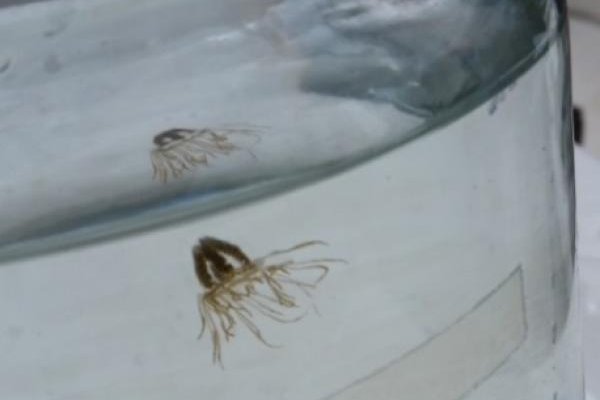
June 20, 2018
 NJ DEP//Provided photo
NJ DEP//Provided photo
Tiny and translucent clinging jellyfish with a potent poisonous venom have made an appearance on the New Jersey coast for the first time ever. Their sting can be excruciating. The DEP is studying them, hoping to map their occurrence and track their DNA to determine where they originated.
A stinging, venomous, small-as-a-dime, inconspicuous organism made a surprise visit to the coastline of the Jersey Shore in June 2016 and is reportedly here to stay.
This week, the New Jersey Department of Environmental Protection released an interactive map of jellyfish sightings so far this season that shows the organisms are slowly moving south.
If you remember, these are the same clingers who hospitalized a grown man for two days after he was stung in the Shrewsbury River near Monmouth Beach in 2016. Since then, wildlife officials have been conducting studies to better understand their distribution and breeding patterns.
NJDEP's map shows the little jellyfish expanding their territory down the coastline toward the Metedeconk River near Point Pleasant Beach. If you're headed to any of the Jersey Shore beaches anytime soon, don't worry. These jellyfish stick to the bay or surrounding estuaries where they can cling to vegetation.
But what's worrying about these organisms is that they're extremely hard to spot in the water — they're only about the size of a dime. Sometimes a red, orange or violet cross can be visible across their middle.
They have 90 venomous tentacles that reportedly feel like a hypodermic needle prick when they come in contact with a person's skin. The stings can cause severe pain and localized symptoms like muscle weakness and even most seriously kidney failure, according to the DEP.
In 2016, the risk was so severe that water sports events on the Shrewsbury, Navesink and Manasquan rivers had to be canceled.
These jellyfish are still mysteries to researchers, as it wasn't until two years ago that the organisms made their way onto the Jersey coast, and researchers aren't exactly sure why.
Wildlife officials do know clinging jellyfish don't mass produce like some other kinds of jellyfish and often spike in population during unseasonably warm weather and water temperatures. Patterns show them popping up in late May to early July and in localized areas like the Shrewsbury and Metedeconk rivers.
If you're stung by one of these jellyfish, here are instructions how to treat it from NJDEP: